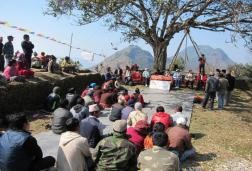
Nepal hosts some of the most spectacular natural areas and biodiversity in the world. Home to the planet’s highest peak, Nepal also boasts 118 ecosystems, 75 categories of vegetation, and 35 types of forest. These resources are increasingly at risk. The people of Nepal, particularly the rural poor, are directly dependent on natural resources for survival, and a significant portion of Nepal’s economy comes from climate-sensitive industries such as agriculture, forestry, and eco-tourism. As a result of both the considerable biodiversity and economic and geographic profile, Nepal is ranked 13th in the world in terms of climate change vulnerability (Source: 2012 Climate Change Risk Atlas).
Long recognized by the U. S. Government as a priority country for biodiversity conservation, Nepal is now also a focus country for the U.S. Global Climate Change (GCC) Initiative. In Nepal, USAID is reducing the adverse impacts of climate change and threats to biodiversity. Building on a successful community forestry program that engages 35 percent of Nepal’s total population, USAID strengthens the ability of local communities to take ownership of their resources and manage them according to international standards. USAID also helps local governments to develop plans to overcome or adapt to climate change risks.








Comment
Make a general inquiry or suggest an improvement.